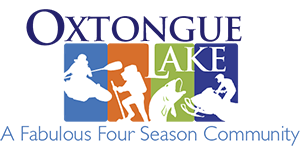________________________________________________
Read up on the Invading Species Awareness Program
2008 Oxtongue Lake Monitoring Results from the Ontario Lakes for the Future Program
“We’re all downstream” Ecologist’s motto
Photo by Dan Reed
Ontario Lakes For the Future (OLF) program is an initiative to support existing lake and watershed health monitoring protocols. It provides a framework for community volunteers to collect ecological data on Canada’s Lakes and to help monitor environmental health.
OLF is overseen by the Citizens Environment Watch (CEW) a not for profit organization founded in 1996 by University of Toronto Scientists in response to government cut backs.
“CEW empowers people to take an active role in restoring and sustaining nature. We give communities the tools for education, monitoring and influencing positive change. Together we create a healthy environment for all.”
The Oxtongue Lake Rate Payers Association has chosen to get involved with the OLF because as a community we believe in the stewardship of the land and water. We realize the value that a healthy lake has on our entire community; socially, economically and environmentally. We also recognize the impact that our actions have on communities downstream and the assistance we can provide in terms of nationwide monitoring and assessment of our ecosystems.
In 2008, the OLRA monitored phosphorous levels and clarity of the lake. Near shore water samples as well as secchi disk measurements, which monitor deep site water clarity, were taken twice a month. The data is still in with the lab and will provide a baseline to monitor changes within our lake ecosystem.
Phosphorous is the primary limiting nutrient in an aquatic ecosystem. It enters the lake via the slow breakdown of rock, decomposition of plants, and the addition of fertilizers, soaps, sewage, and agricultural runoff. Due to the geological make up of our lake, phosphorous is naturally low. However human activities can cause eutrophication of the lake resulting in a higher phosphorous level. Higher phosphorous level causes an increase in productivity of plant growth. At a high enough level this can cause a bloom of bluegreen algae (cyanobacteria). This algae bloom can cause skin irritation, diarrhea and vomiting. At high enough levels it causes liver and nervous system damage. It renders water unsuitable for drinking or swimming in.
Actions which minimize phosphorous loading include:
- Proper maintenance of septic systems
- Not applying fertilizers or even compost near the shoreline
- Restoring natural shoreline vegetation (this minimizes runoff, takes up excess phosphorous, and creates wildlife habitat and shading).
The OLRA is also participating in 3 initiatives under the Ecological Monitoring and Assessment Network (EMAN). The first is recording the ice-on and ice-off dates. The second is the Flowering Plants program which monitors the dates that particular plants flower. Both of these programs collect data to observe climatic changes and trends over time. The third is the Frog Watch program which monitors species presence and population levels of frogs. Amphibians are very sensitive to change and problems in their environment. Because they live in water and on land, they are great bio-indicators for both aquatic and terrestrial ecosystems. Their skin is extremely permeable and as such they absorb toxins and micro organisms. They undergo a complex transformation from tailed gill breathers to four legged air breathers. Some chemical pollutants can act as a hormone and interfere with metamorphosis. Eggs are typically laid at or near the surface. Increases in UV radiation caused by thinning of the ozone can kill the eggs. Frogs are very important as they act as conveyers, moving nutrients from the water to the land. They also help us out by eating pesky insects!
The OLF and EMAN programs are being undertaken locally by Ben Teskey. Ben is the owner of the Wolf Den Hostel and Nature Retreat and a graduate of the Ecosystem Management program at Fleming College.
The OLRA is seeking volunteers to participate in the EMAN programs. Materials and information, including a really neat Frogs and Toads of Canada CD will be available at The Wolf Den in the New Year.
For more information please visit:
OLF program or CEW http://www.citizensenvironmentwatch.org
EMAN programs http://www.eman-rese.ca/eman/program/about.html
Contact Ben Teskey at The Wolf Den

